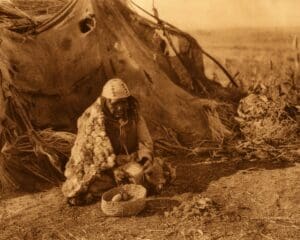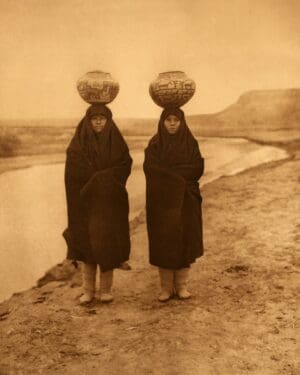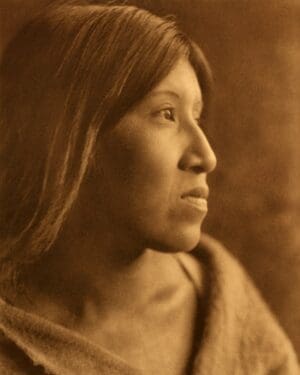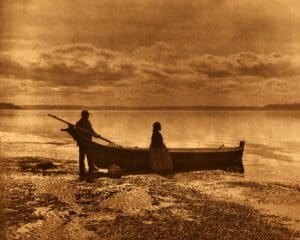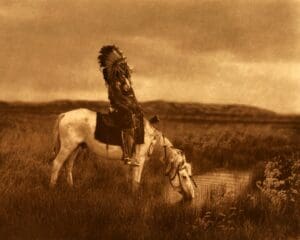Achomawi Native Americans
Achomawi Indian Photos by Edward S. Curtis
Tribal Summary
Dress
Achomawi Indian men ordinarily wore either nothing at all or a scanty loin-cloth. For protection from the elements they had deerskin shirts, fur robes, moccasins, hip-length leggings and fur caps. Hair was worn in a bunch at the back of the head. On special occasions they used ornaments of dentalia in the ears and in the septum of the nose. They never tattooed.
Achomawi Indian women wore a short skin made of fringed deerskin, of tules, of Xerophyllum grass or of shredded bark. The long deerskin dress, fringed and beaded, was sometimes seen at dances. Fur robes, moccasins, and leggings were used as necessity required, but basketry caps were in constant use. The hair hung in braids in front of the shoulders, or was coiled on the crown of the head. Nasal and ear ornaments were used, and in rare instances the chin was tattooed.
Dwellings
The winter house of the Achomawi was usually about fifteen feet square. Structures of twice that dimension were used for the chief’s family and ceremonial assemblies. The house was erected over an excavation about three feet deep. The bases of the rafters rested on the ground at the edge of the pit, and the tops were supported by crotched posts. The roof, which was only roughly conical, was thatched with grass and earth. At the peak was a smoke-hole, which served also as exit and entrance by way of a ladder lashed to the main supporting post. In the front an inclined trench extending from the interior beyond the edge of the roof served the purpose of creating a draft for the fire. Summer habitations were conical or hemispherical, rarely oval, and tipis covered with tule mats.
Food
Acorns and pinole (the fine flour of parched seeds of such plants as tarweed, sage, and the grasses) were the staple vegetal foods. Others were pine-nuts, manzanita-berries, camas, pine-bast, tule-roots, and various fruits. Deer, antelope, elk, rabbits, badgers, gophers, mink, woodrats, even cougars, otters, skunks and wildcats were eaten. Grasshoppers and the larvae of yellow-jackets were delicacies. Fish and fowl of all kinds were consumed.
Showing all 2 results

